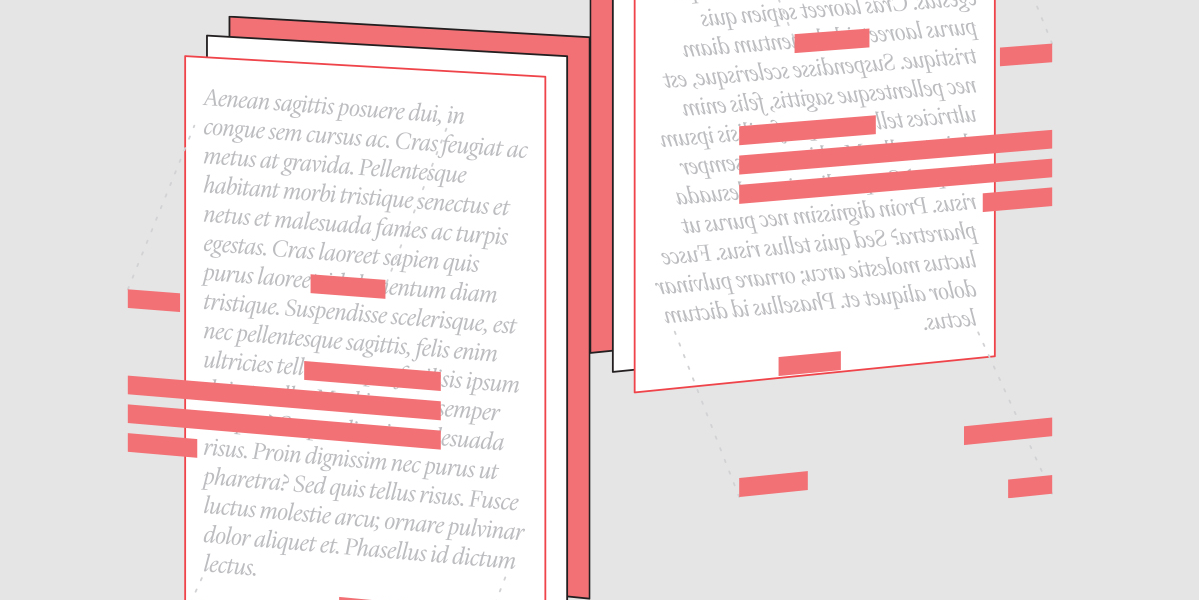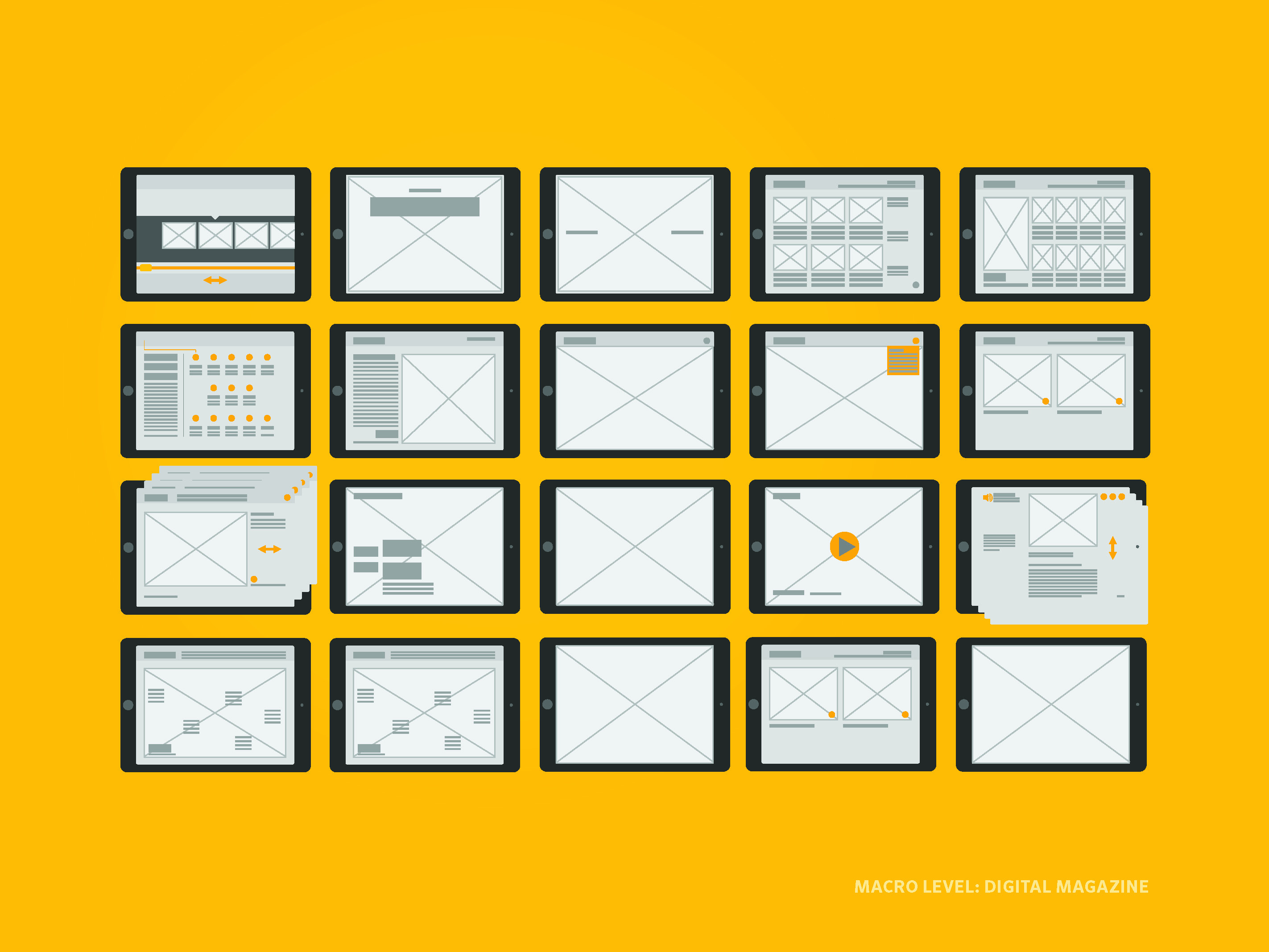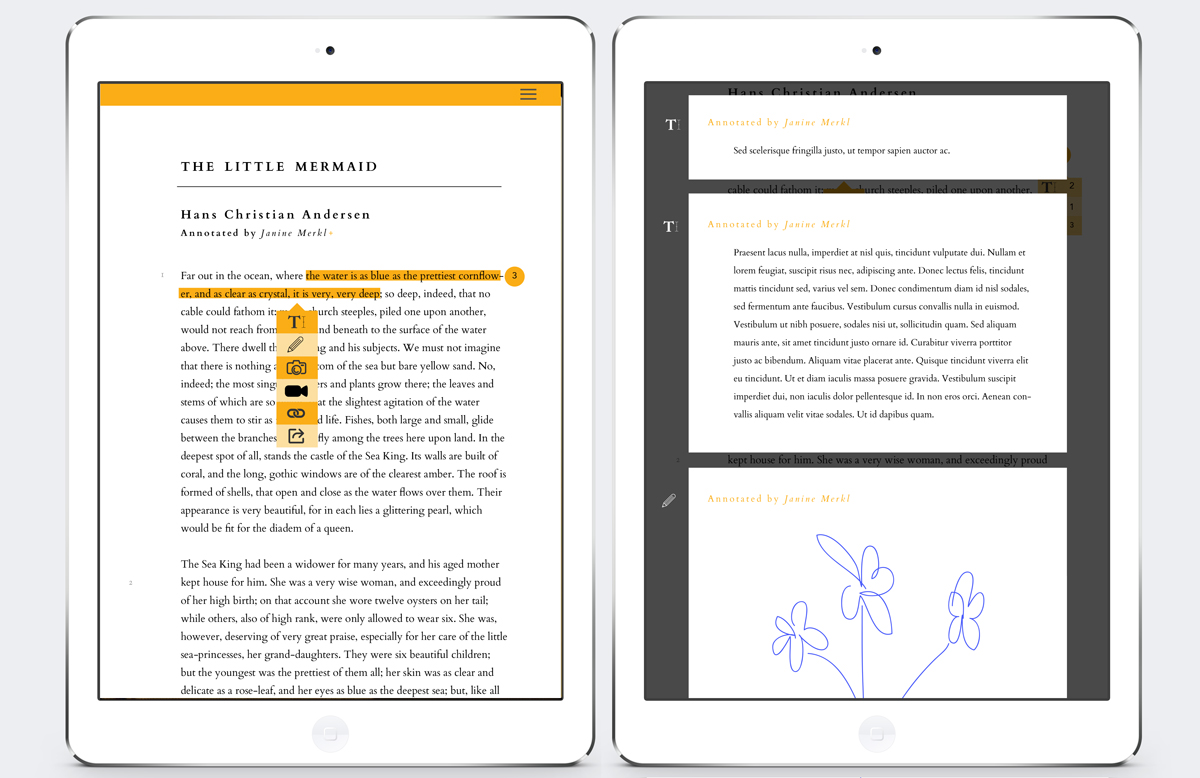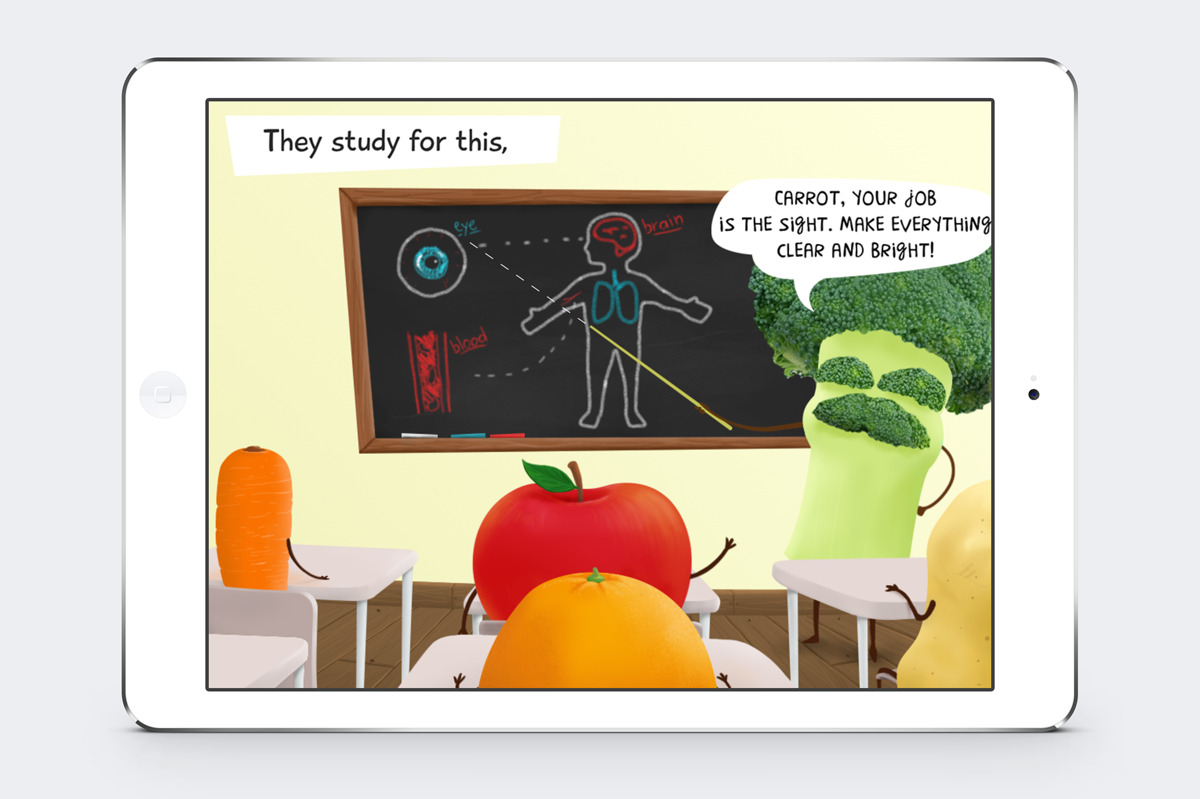
COMD415 Enhanced Ebook Design
The course includes lectures, readings, tutorials and demos, and a series of guest speaker lectures (designers and representatives from local development agencies working in the field) including Talent Pun from Loud Crow Interactive, James Chutter from Story Panda, Ryan Vetter from Wundr Books, and children’s book designer Robin Mitchell-Cranfield.

National Geographic Case Study by Natalie Worth.This project is a case study on National Geographic. The analysis includes a review of a single issue in its print and digital magazine (Adobe DPS) versions and maps differences and challenges in the presentation of the same stories.
Project 01: The form of the Ebook
In the first project, students produce case studies to research contemporary practice in enhanced ebooks in a variety of genres; they are encouraged to develop a critical vocabulary in ebook interface design, and to critique and place ebooks within a wider social/virtual context.
The codex has prevailed for centuries as the primary form associated with books, but the advent of high resolution haptic mobile devices is making reading on screens commonplace and opening the possibilities for new forms of books for screen environments. The definition of ebook has primarily referenced the digital nature of the book not only in its mode of production but also in how it is published, delivered and consumed: “a text- and image-based publication in digital form produced on, published by, and readable on computers or other digital devices”(Gardiner and Musto, 2010). This inclusive definition describes a wide range of digital text formats, from traditional static PDFs to EPUB-type files dependent on eReader applications such as iBooks or Kindle and standalone applications such as Inkling’s or Adobe DPS apps.
Regardless of the level of complexity and/or interactivity present in these ebooks, they are all, in one way or another, structurally and formally defined in response to a notion of “book” that is equivalent to the codex archetype: pages stitched and/or glued together between covers. What has happened to the spread? What are the structural elements of a digital book? What purposes do they serve? How are these “features, needs, qualities” being addressed in ebook design? What does it mean to move from a physical notion of book that is “bound” to a notion of “book” that is framed? How have the concrete gestural interactions changed from the physical to the electronic realm? As communication and interaction designers we need to be observant of how meaning is remodeled or altered through form giving and the determination of new modes of interactions with text, images and books in the screen world.
This project explores the evolving identity of the “book” in contemporary digital culture by researching and analyzing an enhanced ebook. Students research, produce and present a case study of an individual book or publication to develop a critical vocabulary in ebook interface design, and to critique and place this ebook within a wider cultural context. To do this, they deconstruct and map out a specific ebook type. The goal is to make explicit the formal structure and interactions present in new ebook forms.

Bookplate: Emotive Annotation by Jacqueline Shaw & Emanuel Ilagan. This project looks at emotive annotation and the possibilities for representing them through a wide variety of media —music, geotags, video, illustrations, as a few examples. Bookplate opens the door to draw wider connections between the text and its readers’ interpretations; a user’s experience with a text can also be packaged, exported and shared, heightening the histories and communities that surround a text.
Project 02: Participatory Ebooks
In the second project, students develop a proof-of-concept video prototype for an enhanced ebook with the goal of facilitating user participation; in this project students are encouraged to develop a critical attitude in their understanding of ebooks as spaces for action and interpretation.
Today’s interactive ebooks include a wide range of “features” and take advantage of both hardware affordances and the connected nature of tablet devices. But in many cases these features are but a superficial layer that obscures the content and is more concerned with tasks than interpretation. How can we conceive of ebooks where in- teraction supports and is “centered in the experiential, subjective conditions of interpretation” (Drucker, 2010)? This project takes a humanist perspective on ebooks and looks at embracing the reader’s subjectivity to move from a model of reading as consumption to reading as register and production.
Building on the knowledge gained from the first project, as well as your readings, you will work in pairs to develop an ebook prototype that supports user participa- tion using content of your choice. Be imaginative and creative in considering the narrative that you’re working with and how to best develop a participant-oriented and considered solution. Think carefully about how you want a reader/user to engage with the content: how are content and interactive affordances interwoven to support participatory engagement, is the ebook socially connected, does it include gaming elements or playful design components? What media best supports the narrative? How will these media be presented? What special features are useful?
In order to concentrate on conceptualizing new possibilities for participation you will prototype concepts using video to show how a reader might interact with the book and what aspects of the book provoke participatory action. To contextualize your work, first choose a specific book genre you want to work with: children’s book, university textbook or other instructional material, self-help books, long form fiction or new fiction, lifestyle magazine, catalogue, artist book, etc.

A Fruitful Life by Alan Maranho. This children’s book app tells the story of fruits, from the moment when are born until they arrive to our tables. The narrative shows that fruits’ and vegetables’ life aspirations: to become rich nourishment. All the content was illustrated and written by the student and the ebook was built as a web application using HTML, CSS3 animations and Javascript.
Project 03: Ebook Development
The final project asks students to produce a sample book chapter in a platform of their choice; they research different ebook development platforms available for tablets and explore their production workflows.
This project builds on the knowledge gained from the first and second assignments, as well as the course readings. Students design an enhanced ebook with content and in the genre of their choice. This is an “open” project, in that you can choose any existing or proposed book. For exisitng copyright free content consider the Gutenberg Project site.
One objective of this project is to explore a series of existing ebook development platforms and choose one to work with, to name a few: EPUB3 and fixed layout specifications, iBooks Author, Adobe DPS, Baker or Laker framework, Origami Engine (Katachi), Aquafadas, etc. The goal here is to work within a production framework and explore a development platform to produce their ebook.
Every student develops a project proposal that specifies goals, presents a clear and focused methodology, and carefully considers the reader/user’s role and modes of engagement. The final prototype is to be fully functional but can be reduced to a representative chapter or section of a book rather than the complete work.